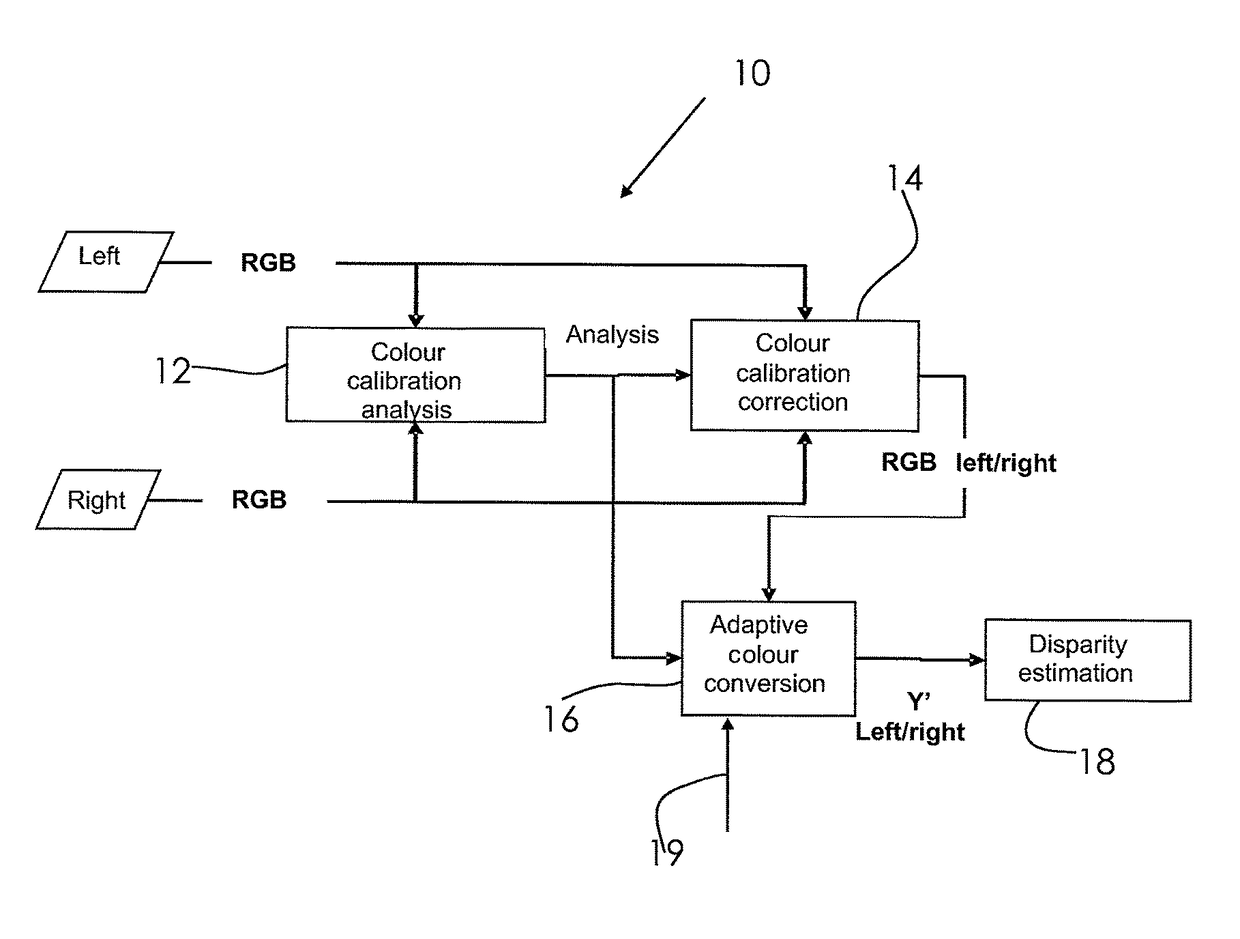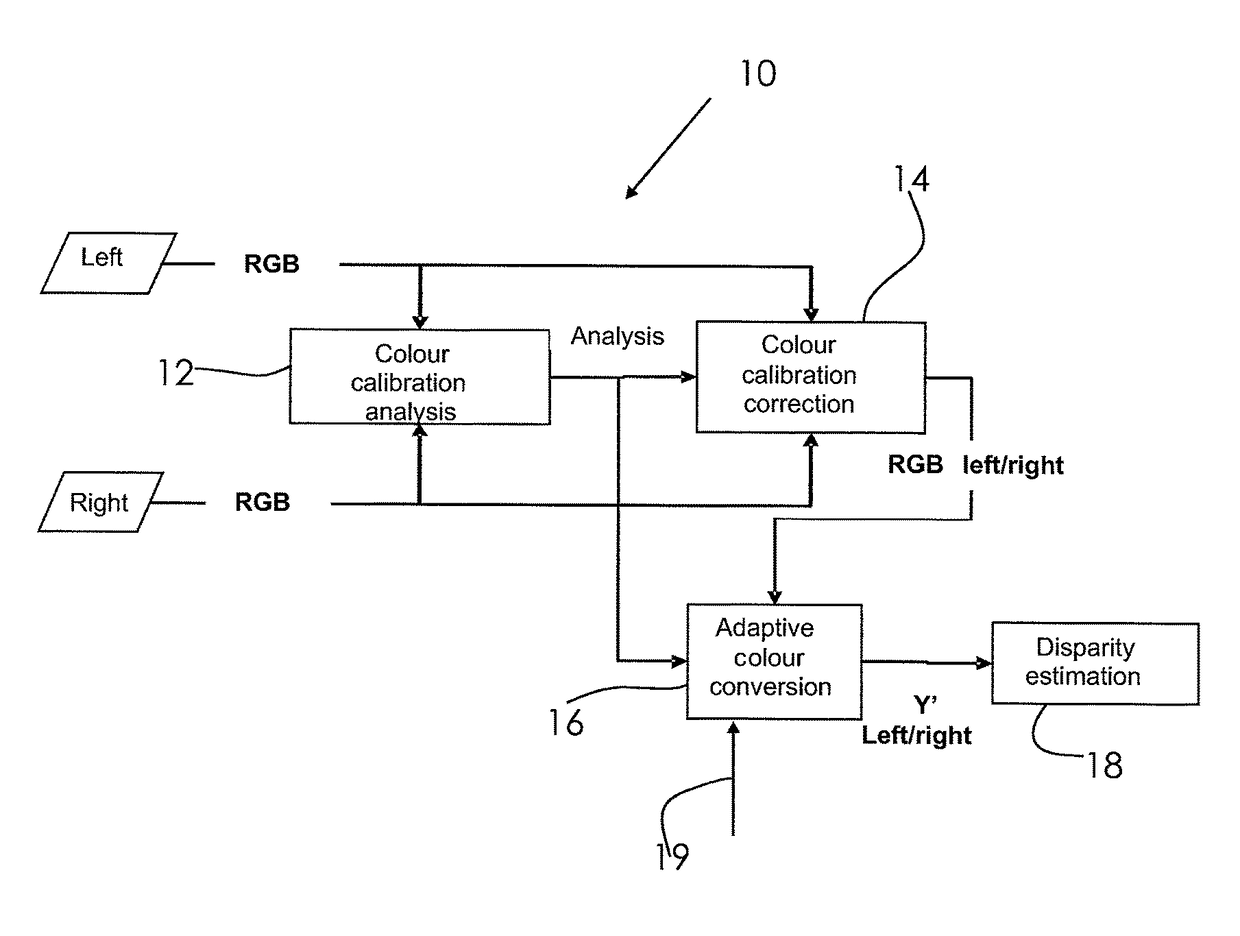Adaptive colorspace conversion for 3D stereoscopic disparity estimation
a colorspace and disparity estimation technology, applied in the field of stereoscopic disparity estimation, can solve the problems of time-consuming and complex hardware, and achieve the effect of improving disparity estimation and improving disparity estimation
- Summary
- Abstract
- Description
- Claims
- Application Information
AI Technical Summary
Benefits of technology
Problems solved by technology
Method used
Image
Examples
Embodiment Construction
[0017]3D stereoscopic devices, like TV sets, beamers, laptops, notebooks, personal computers, tablet computer, etc. have the capability to display 3D video content that consists of two image sequences, one for the left eye and the other for the right eye. The pixel-by-pixel displacement between the left and right eye images, called disparity, is directly related to the depth of the objects that the user perceives. Such 3D stereoscopic devices comprise circuitry for disparity estimation and / or to calculate disparity maps. Disparity maps, for example, are used to place text or graphic into 3D scenes, to generate new views or to adjust the depth of the scenes and objects to meet the viewer's comfort level. For example, when watching stereoscopic 3D content, a user may want to adjust the depth of the objects in the 3D scene in order to have a more pleasant and comfortable viewing experience.
[0018]On the basis of a disparity map, such depth adjustment could be performed.
[0019]The operati...
PUM
 Login to View More
Login to View More Abstract
Description
Claims
Application Information
 Login to View More
Login to View More - R&D
- Intellectual Property
- Life Sciences
- Materials
- Tech Scout
- Unparalleled Data Quality
- Higher Quality Content
- 60% Fewer Hallucinations
Browse by: Latest US Patents, China's latest patents, Technical Efficacy Thesaurus, Application Domain, Technology Topic, Popular Technical Reports.
© 2025 PatSnap. All rights reserved.Legal|Privacy policy|Modern Slavery Act Transparency Statement|Sitemap|About US| Contact US: help@patsnap.com


